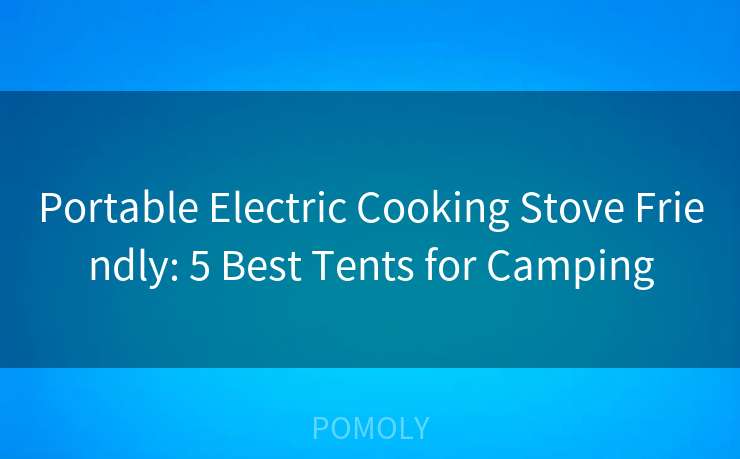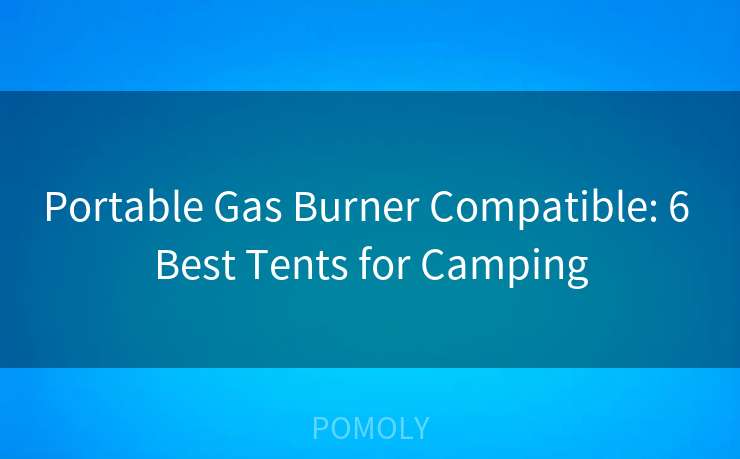Pitching a Tent Tips: Practical Guide for Every Camper

Pitching a Tent Tips: Practical Guide for Every Camper
Camping is one of the most thrilling outdoor activities you can engage in. It combines the simplicity of staying in a tent with the excitement of exploring nature. However, setting up a tent can be challenging, especially if you’re new to camping. A good tent should provide you with comfort, shelter, and protection from the elements. But did you know that a tent with a wood stove, often referred to as a "hot tent," can add an extra layer of warmth and functionality to your camping experience?

In this article, we will explore the best tips for pitching a tent, including how to choose the right tent, how to set it up properly, and how to use a wood stove effectively. We’ll also discuss the benefits of using a hot tent and provide you with practical advice to make your camping trips more enjoyable.
What is a Tent?
A tent is a structure designed to provide shelter from the weather while camping. It can be temporary or permanent, depending on your needs. Tents come in various sizes, materials, and styles to accommodate different types of campers. Whether you’re planning a weekend getaway or a longer outdoor adventure, choosing the right tent is essential.
Key Features of a Quality Tent
- Durability: A good tent should withstand harsh weather conditions, including rain, wind, and UV exposure. Look for tents made from high-quality materials like polyester, nylon, or canvas.
- Size: Choose a tent that fits the number of people you’ll be camping with. A one-person tent is perfect for solo adventurers, while a two-person tent can accommodate a couple or a family.
- Weight: Heavier tents may be harder to set up and move, so consider your mobility and the terrain when selecting a tent.
- Aesthetic: While not essential, a tent with a appealing design can enhance your camping experience. Many tents come with unique features like built-in tables, chairs, or storage compartments.
- Adjustability: Tents with adjustable poles or suspension systems can help you set up more easily and accommodate uneven terrain.
How to Choose the Best Tent for Camping
Choosing the right tent depends on your personal preferences, the type of camping you’ll be doing, and the weather conditions. Here are some tips to help you select the best tent for your needs:
1. Consider the Purpose of Your Trip
- Camping for Extended Trips: If you plan to camp for several days, choose a heavy-duty tent made from durable materials that can withstand prolonged exposure to the elements.
- Camping for a Weekend Getaway: A lightweight, compact tent will be more convenient for a shorter trip.
2. Think About the Weather
- Light Rain or Slight Snow: A tarp or a lightweight tent is ideal for light precipitation.
- Heavy Rain or Snow: A heavier tent, such as an UL-tethered tent or a ghost tent (a tent without poles that stays up by its own weight), will be more durable in heavy weather.
3. Check Reviews and Ratings
Read reviews of tents and wood stoves to determine which products are reliable and meet your needs. Look for ratings based on durability, ease of setup, and versatility.
4. Read Camping Guides and Tutorials
Online resources can provide valuable insights into which tents and stoves are best suited for different types of camping. Many experienced campers share their tips and tricks on websites like REI, Backcountry, and camper blogs.
How to Set Up a Tent
Setting up a tent correctly is crucial to ensure it stays upright and protects you from the weather. Follow these steps to set up your tent properly:
1. Choose a Clear Opening
Select a location with good wind protection and a clear opening to your destination. Avoid planting trees or rocks near the tent entrance, as they can block airflow and trap heat.
2. Prepare the Ground
- Unroll a tarp or groundsheet over the ground to protect your tent from moisture and dirt.
- Place a tarp mat or anti-slip mat under the tarp to prevent skidding.
- Set up poles or stands to keep the tent upright if it’s a lightweight model.
3. Fold and Set Up the Tent
- Fold the tent according to the manufacturer’s instructions.
- Set up the poles or suspension points.
- Attach the flysheet or tarp to the corners of the tent to secure it firmly.
- Tie the flysheet to stakes or poles to prevent it from blowing away.
4. Adjust the Tentspoons
Tentspoons are small hooks at the top of the flysheet that allow air to escape, preventing it from trapping heat and moisture. Tweak the position of the tentspoons to ensure airflow and prevent condensation.
5. Check for Leaks
Inspect the tent for any leaks, holes, or gaps. If you find any, repair them with the same material used to make the tent or tarp.
The Benefits of Using a Hot Tent
A hot tent, also known as a tent with a wood stove, is a must-have for any serious camper. Here are some of the benefits of using a hot tent:
- Comfort and Warmth: A wood stove in a tent provides warmth, especially during cold weather. Whether you’re sleeping inside or using the tent as a portable cabin, a wood stove keeps you warm and comfortable.
- Cooking and Baking: A wood stove is an excellent tool for cooking or baking. You can use it to prepare meals, bake cookies, or toast marshmallows.
- Fire-Making: A wood stove is a versatile fire-making tool. You can use it to start a fire, build a fire, or even make fire art.
- Hands-On Fun: Setting up and using a wood stove can be a fun and engaging activity, especially for kids.
- Cost-Effective: Wood stoves are relatively affordable and provide a good return on investment.
How to Use a Wood Stove in a Hot Tent
If you’re planning to use a wood stove in your tent, here’s how to do it properly:
🔔🔔🔔 【Sponsored】
 🔔🔔🔔
🔔🔔🔔1. Select the Right Wood Stove
A wood stove for a hot tent should be compact, portable, and easy to carry. Some popular options include:
- Portable Stoves: These are ideal for camping because they are small, lightweight, and easy to transport.
- Integrated Wood Stoves: These are made of durable materials and are often designed with a chimney socket for easy installation.
- Portable Fire Pits: These are easy to carry and can be used as a temporary fire source.
2. Prepare the Stove
- Clean the stove by removing any debris.
- Add wood to the stove. You can use birch wood, cedar, or any type of wood that burns well.
- Tighten all the screws and secure the lid properly.
3. Install the Stove in the Tent
- Place the stove inside the tent, away from the tent poles.
- Attach the stove to the tent with a sturdy stand or by drilling holes in the tent floor.
- Install the chimney socket on the stove. If you’re using a portable stove, you’ll need to drill a hole in the tent ceiling to accommodate the chimney.
4. Light the Stove
- Place a match or a lighter in the ignition compartment.
- Trim the wick and light the stove.
- Maintain a steady airflow by stirring the wood or adding more as needed.
5. Use the Stove for Cooking or Warmth
- Set up a cooking area on the stove or in the tent.
- Use the heat from the stove to warm up the tent or yourself.
- Enjoy your meal or treat yourself to some marshmallows.
Tips for Using a Hot Tent
- Plan Ahead: If you’re using a hot tent, plan your meals and activities in advance to make the most of your time in the outdoors.
- Check the Wood: Always check the wood before lighting the stove. Good wood is dry, consistent, and free of knots or decay.
- Use Good Insulation: Insulate your tent to keep it warm. A thick groundsheet or insulating fabric can help retain heat.
- Practice Safety: Always keep the stove away from flammable materials and ensure that it’s properly secured.
- Take Care of the Environment: Don’t litter or leave trash behind. Carry trash with you and dispose of it responsibly.
What Is a Hot Tent?
A hot tent is a tent that includes a wood stove, often integrated with a chimney socket, designed to provide warmth, cooking, and fire-making capabilities. A hot tent is perfect for cold weather camping, as it allows you to stay warm and comfortable.
Types of Hot Tents
- Portable Hot Tents: These are small, lightweight tents designed for camping in remote areas. They often come with a wood stove and are easy to carry.
- Integrated Wood Stoves: These stoves are designed to fit inside a tent and are often used with portable tents.
- Portable Fire Pits: These are compact fire-making tools that can be used as a temporary stove.
How to Choose the Best Wood Stove for Your Hot Tent
Choosing the right wood stove for your hot tent is essential for ensuring that you can enjoy the benefits of a wood stove. Here are some tips for selecting the best wood stove for your setup:
1. Material and Design
- Look for stoves made from durable materials like metal or stainless steel. These materials are fire-resistant and easy to clean.
- Integrated wood stoves, which combine the stove and chimney in one unit, are often more affordable and easier to transport than separate stoves.
- Portable stoves are ideal for long-distance camping, as they are lightweight and easy to carry.
2. Size and Portability
- If you’re camping in a large group or for extended periods, choose a stove that can be carried by one person.
- Portable stoves are usually designed to be compact and easy to transport.
3. Ease of Installation
- Some stoves come with built-in stands or brackets to make installation easier.
- If you’re using a portable stove, you’ll need to drill a hole in the tent ceiling to accommodate the chimney.
4. Fire Management
- A good stove should have a ignition compartment with a wick hole to ensure proper ignition.
- Some stoves come with features like a draft tube or venting holes to help with airflow and ignition.
5. Cost
- Wood stoves can range in price from $50 to $300 or more, depending on the quality and features.
- Consider the budget you have and the features you need.
Final Thoughts on Pitching a Tent Tips
Camping can be an incredible experience, but setting up a tent and using a wood stove correctly takes some preparation and skill. By following the tips and considerations outlined in this article, you’ll be able to pitch a tent confidently and enjoy the warmth, comfort, and fun that a hot tent provides.
Whether you’re a novice camper or an experienced outdoor enthusiast, taking the time to research and plan your setup will help you make the most of your outdoor adventures. So, pack your gear, hit the trails, and enjoy the great outdoors!
This article covers the essential aspects of camping, tent setup, and the use of a wood stove in a hot tent. It is written in a conversational tone to engage readers while providing valuable information. The content is structured to be easy to read and includes relevant keywords to enhance SEO performance.

Scan the QR code to access on your mobile device.
Copyright notice: This article is published by AotSend. Reproduction requires attribution.
Article Link:https://blog.pomoly.com/post41.html






